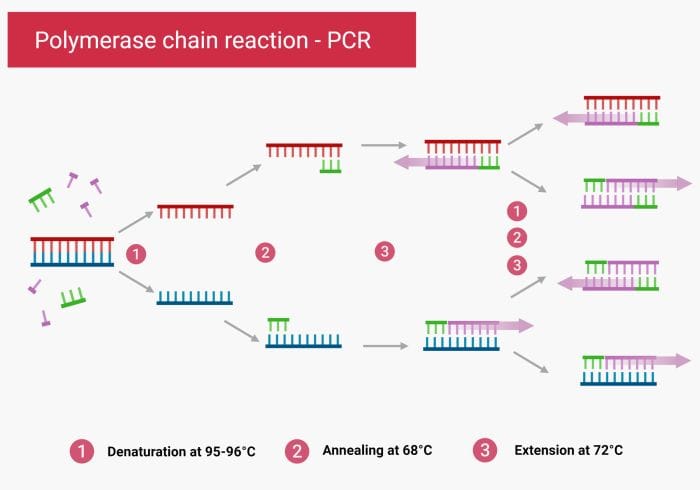
08 Apr Ultralow-abundance nucleic acid detection by electrokinetic concentration using microfluidic PCR chips
A crucial task for sample preparation is nucleic acid amplification which is a process at which the nucleic acid content of a sample with a particular sequence is amplified extensively to be readable using read-out techniques such as fluorescent imaging.
Nucleic acid amplification tests hold paramount significance for disease diagnosis at the point of care. The importance of such systems is even more highlighted during the times of pandemic such as the recent unfortunate COVID-19 pandemic. A portable microfluidic platform for diagnosis of COVID-19 at the point of care capable of diagnosing the disease at early stages is of vital importance and can save thousands of lives as well as taking the burden off the shoulders of pathogen detection laboratories and health sectors.
Microfluidics is adjustable to both isothermal and non-isothermal (such as polymerase chain reaction or PCR) nucleic acid amplification methods allowing rapid and cost-effective nucleic acid amplification.
Microfluidic devices, compared to conventional methods, carry several advantages such as affordability and modularity. Also, the microfluidic PCR chips are capable of operating at the point of care while common machines such as PCR are not. Besides, these chips need lesser reagents and operate faster and can be mass-produced at a high rate.
Recently, researchers at MIT have developed a microfluidic chip for one-step nucleic acid purification and noise-resistant PCR for ultralow-abundance nucleic acid detection published in the Angewandte Chemie journal.
Primer dimmers and non-specific amplification is often a barrier for accurate and efficient nucleic acid amplification which happens in non-optimal PCR conditions. By incorporating an electrokinetic method and performing the PCR in a microchamber, they could successfully prevent non-specific amplification.
“We achieved the detection of 5 copies of M. tuberculosis genomic DNA (equaling 0.3 cell) in real biofluids using both well‐optimized and non‐optimal PCR designs, which is 10× and 1000× fewer than those of the standard bench‐top method, respectively. By significantly simplifying the workflow and shortening the development cycle of NAATs, our platform may find great uses in point‐of‐care diagnosis and beyond.”, the authors stated.
Read the original research article: One‐Step Nucleic Acid Purification and Noise‐Resistant Polymerase Chain Reaction by Electrokinetic Concentration for Ultralow‐Abundance Nucleic Acid Detection

Pouriya Bayat
Pouriya is a microfluidic production engineer at uFluidix. He received his B.Sc. and M.A.Sc. both in Mechanical Engineering from Isfahan University of Technology and York University, respectively. During his master's studies, he had the chance to learn the foundations of microfluidic technology at ACUTE Lab where he focused on designing microfluidic platforms for cell washing and isolation. Upon graduation, he joined uFluidix to even further enjoy designing, manufacturing, and experimenting with microfluidic chips. In his free time, you might find him reading a psychology/philosophy/fantasy book while refilling his coffee every half an hour. Is there a must-read book in your mind, do not hesitate to hit him up with your to-read list.


